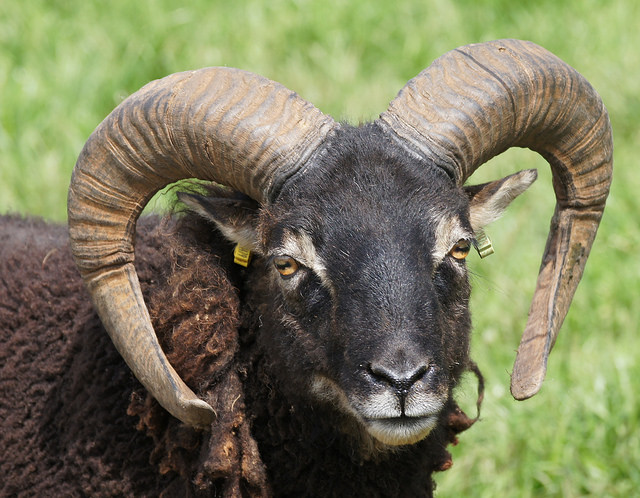Celebrating thirty years of the St Kilda Soay Sheep Project
By Kate Marshall, Press Intern
Feral soay sheep have wandered the wilds of Scotland’s St Kilda islands for millennia, becoming one of the country’s most famous natural icons. A large part of the sheep’s fame has come from a long-term scientific study, The Soay Sheep Project, which celebrates its 30th anniversary this year.
Commemorating the project’s huge and enduring impact on ecology this week was a special session of talks at the British Ecological Society’s annual meeting in Edinburgh. The session heard expert ecologists looking back over the project’s successes, as well as looking ahead to what other long-term studies can learn from it.

In her plenary talk, Professor Josephine Pemberton, an evolutionary ecologist at the University of Edinburgh, looked at the simple, yet scientifically valuable, opportunities that the Soay Sheep Project has provided for her research.
Pemberton began her research on St Kilda’s sheep in 1994, and since then has led a multitude of studies along with her collaborators (involving remarkable determination in the field to catch them!)
Soay sheep are one of the most primitive breeds of domestic sheep, probably remaining unchanged for thousands of years. Originating from the island of Soay, dating back to Viking times (9th and 10th centuries AD), they probably arrived on St Kilda with the first human settlers about 4,000 years ago.
The sheep have no predators, so interact with only plants and parasites and are isolated in their island environments. Pemberton explained that this provides a simple ecosystem in which to perform long-term studies of individuals and allow a great diversity of questions to be addressed.
These studies have ranged from untangling basic ecological questions, such as how weather and population density affect individuals, to genetic puzzles, such as uncovering the genetic basis of horn size.
In her genetic studies, Pemberton praises the value of a special tool developed by the International Sheep Genomics Consortium (ISGC) – an SNP chip that quickly and easily allows identification of an individual’s genome.
Horn size. Horns are important weapons in males during the rutting season, when they compete for mating opportunities. Some are lucky enough to have long horns, while others grow inferior stubby and wonky horns, and some hapless individuals have no horns at all.
Intriguing research by Pemberton and colleagues have not only revealed the genetic architecture underlying horn size (a single locus on Chromosome 10), but have also linked the fitness of individuals with the genome they carry.
While long-horned individuals have the most offspring, the unfortunate ones with stubby or no horns have the least breeding success. But long horns also carry a cost: sheep with these horns are least likely to survive. Surprisingly, individuals with an intermediate horn size survive best and still produce many offspring, so have the highest overall fitness.
Temporal trends. Pemberton’s team are left scratching their heads about why the size of the sheep on St Kilda seems to be declining along with an increasing population size. One possibility is that the North Atlantic oscillation (NAO) – a climatic phenomenon where the atmospheric pressure at sea level fluctuates in a random way – has produced a current climatic environment that explains these trends.
Ageing. As well as genetic and basic ecological questions, Pemberton and her team have also revealed for the first time that, similarly to us, ageing (senescence) seems to occur in soay sheep. For example, the weight of young and adults decline in the second half of life. Intriguingly, different traits deteriorate at different rates in different individuals, possibly because some are more susceptible to ageing than others.
Pemberton emphasized that these discoveries show the importance of long-term studies on individuals, because they can provide crucial insights into changes that occur over an animal’s lifetime in relation to its particular circumstances.
In his introductory talk, Professor Ben Sheldon from the University of Oxford, who has led research on a similarly long-studied population of great tits (Parus major) in Wytham Woods, Oxford, suggested five main reasons why the Soay Sheep Project has been so successful (also excellently reviewed in a blog post by Professor Ken Wilson here).
- Simple – but not too simple – study system
- Integrated, broad scientific themes: population dynamics, life history evolution, evolutionary genomics and genetics, parasite-host interactions
- Good leadership with a clear vision and acquisition of consistent funding
- Continuous recruitment of ‘rising stars’ in research
- A foundation for many successful research careers
Sheldon also described how other long-term studies of individuals can learn from the Soay Sheep Project, to take advantage of the scientific opportunities that such studies can provide. For example, he suggests collecting the genomes of individuals across populations on broad spatial scales to reveal whether evolutionary changes occur at the same time.
Sheldon also raised the important point that the majority of long-term studies have focused on a limited range of animals – just birds and mammals – and called for a greater diversity of study species, particularly as methods improve and technologies advance, such as lightweight tags for tracking and genetic tools.
Among the many challenges that such research faces, one is to justify how it is relevant to society – an argument that is increasingly, and somewhat understandably in the current economic climate, determining success in acquiring funding (e.g. Sheldon cited the use of great tits as a biocontrol agent).
The Soay Sheep Project has undoubtedly been a scientific success story and one that will pave the way for future long-term studies on individuals. As these develop, it is important to foster communication among experts – as we have seen here at the BES Annual Meeting – who can identify and thus quickly resolve the challenges that such studies face.
Like what we stand for?
Support our mission and help develop the next generation of ecologists by donating to the British Ecological Society.